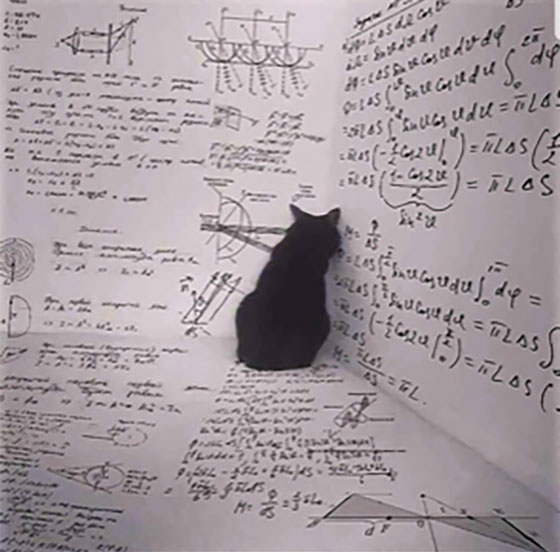Well, we have tried several nights now to go outside and see if we can find any remnant of the Starlink satellites string of pearls. Unfortunately,
the only glimpse of any of the 60 latest satellites is this one brief instance, caught in the DSLR 10-second image.
 |
| Caught one, bottom right, glimpse of Starlinks in this DSLR, 10 second exposure (Source: Palmia Observatory) |
In the meantime, while we wait for the next launch of Starlinks, where some of the unofficial SpaceX followers say could be as early as May 7, we get other exciting news from the Boca Chica test site. Here @BocaChicaGal, Mary, reports on the @NASAspaceflight channel, of an ongoing portion of the first fueling test of SN4. Although we don't have any official news, this test seems to just show some flaring of the methane fuel used during the test and it is assumed to be just normal operation and not some kind of failure. The "scheduled" test hop of SN4, using just one Raptor engine, is projected for sometime next week. Thanks for that video, Mary and NASAspaceflight!
 |
| SN4 first fueled test with subsequent methane flare (Source: @BocaChicaGal on @NASASpaceflight) |
So, now we can review news a little closer to home with ongoing life here at the observatory. Since we have been in lockdown mode for many weeks now and it is not possible to go out for "non-essential" services. Now this phrase still irks me and yes I get that this is sort of an emergency, but come on, if you maintain social distancing, etc. why can't you go to the beach?
Anyway, without a chance to get out to the barbershop, I'm discovering a new personality buried beneath my golden locks. My alter ego, Professor I. Nootin, is eager to take advantage of our isolation and to discover something new. Hmm, too bad I would rather have another martini!
 |
| Resident Astronomer's alterego, Professor Nootin, and hair in social isolation (Source: Palmia Observatory) |
Ok, ok, that is not the real length of my hair, but instead represents a little innovation from Resident Astronomer Peggy's makeup drawer. The length of my hair is just barely getting long enough to just barely start a man bun! Darn! I guess I'm not going to have the right hair to invent something for quite some time yet! Besides the real Newton had more going for him inside his head than what was happening on the outside. For me, I'm constrained by both inner and outer conditions!
 |
| Resident Astronomer still not quite at the man bun stage (Source: Palmia Observatory) |
Alright, let's get back to some more serious work while we are stuck at home. Many other physicist wannabes return to the study of general relativity at times like this. I wondered why is it that we go through all of the tensor mathematics to come up to speed in general relativity? Hmm, let's begin with the example of the geodesic equation, which is used to follow the trajectory of a particle moving in a gravitational field. Then we can try to see how it would be applied to motion around a black hole.
As a starting point, check out the five equations copied out of Sean Carroll's textbook, "Spacetime and Geometry. The first one, (Eq. 3.44) is the geodesic equation. For flat spacetime, the connection, shown as the Greek capital Gamma, is just equal to zero. So when you solve the resulting equation, you just get a straight line; that is, since there are no forces acting on the particle, the particle moves in a straight line. This is just the principle of inertia.
The next equation (Eq. 3.5) shows the effect of curved spacetime on a vector. Normally in flat spacetime, derivatives of a vector are just that and the connection is equal to zero, but in curved spacetime, the coordinate system changes too and Equation 3.5 tells us how to account for that effect.
So, how do we calculate the connection? Equation 3.1 tells us how to do it. This equation is just the sun of various derivatives of the metric. It does get complicated when you actually try to work this out by hand. Remember that the connection is shown with 3 indices (lambda, mu and nu) and each of these can vary over 3 dimensions of space and 1 dimension of time. So, the connection symbol really represents 4 x 4 x 4 = 64 different components, where each one is a particular derivative of the metric. These components are then summed together for the four separate geodesic equations. Darn, that is going to be a lot of work, especially when you consider what the metric for spacetime around a black hole looks like. This is shown in Equations 5.1
 |
| Solving for trajectory around a black hole (Source: Equations abstracted from Sean Carroll, "Spacetime and Geometry") |
So, should we begin the process by differentiating the metric and seeing what happens? If we are lucky many of those 64 equations will turn out to be zero.
I think for me, I'm tired out of doing anymore with this today. But before giving in for the day, we should make sure we understand Equation 5.1. That equation is not directly the same as the metric, but is known as the line element squared. It shows how measuring a little line segment near a black hole gets distorted by the intense gravitational field. The line element can be rearranged to look more like a conventional metric by showing it as a 4 x 4 matrix. In the figure below, copied from Jim Hartle's textbook, "Gravity - An Introduction to Einstein's General Relativity." The line element shown as Equation 9.9 is rearranged to be in more conventional metric form and shown as Equation 9.10. The term, 2M here, or 2GM, in the previous figure is known as the Schwarzschild radius, which is the radius of the event horizon of the black hole. Some equation include G and other symbols, which are often just set equal to one, so that the equations are not as complicated and all the various constants can be added back in when you actually do the calculations.
 |
| Putting Schwarzschild line element in the form of the metric (J. Hartle, "Gravity..." |
Ok, I don't know about you, but I am worn out just trying to get this far. Let's not try to actually differentiate the metric to get the connection or use the connection to calculate with the geodesic equation how a particle would move around the black hole. Feel free to knock yourself out on this if you want!
Finally, let's enjoy a humorous post from some unknown author, forwarded by a philosophy associate, Andreas. Here we get a chance to see what actually was going on inside the box where the unfortunate Schrodinger's cat was placed. While waiting for the radioactive particle to decay or not, we see what might have been actually going on inside the box as the unfortunate cat plans its revenge! Hmm, it seems the cat perhaps might be trying to create a wormhole to get out of the box!
 |
| Schrodinger's cat plans its revenge (Source: many reposts, but original unknown) |
Until next time, here from our burrow, stay safe, but it's time to recover more of our freedom,
Resident Astronomer George
Be sure to check out over 400 other blog posts on similar topics
If you are interested in things astronomical or in astrophysics and cosmology
Check out this blog at www.palmiaobservatory.com

No comments:
Post a Comment